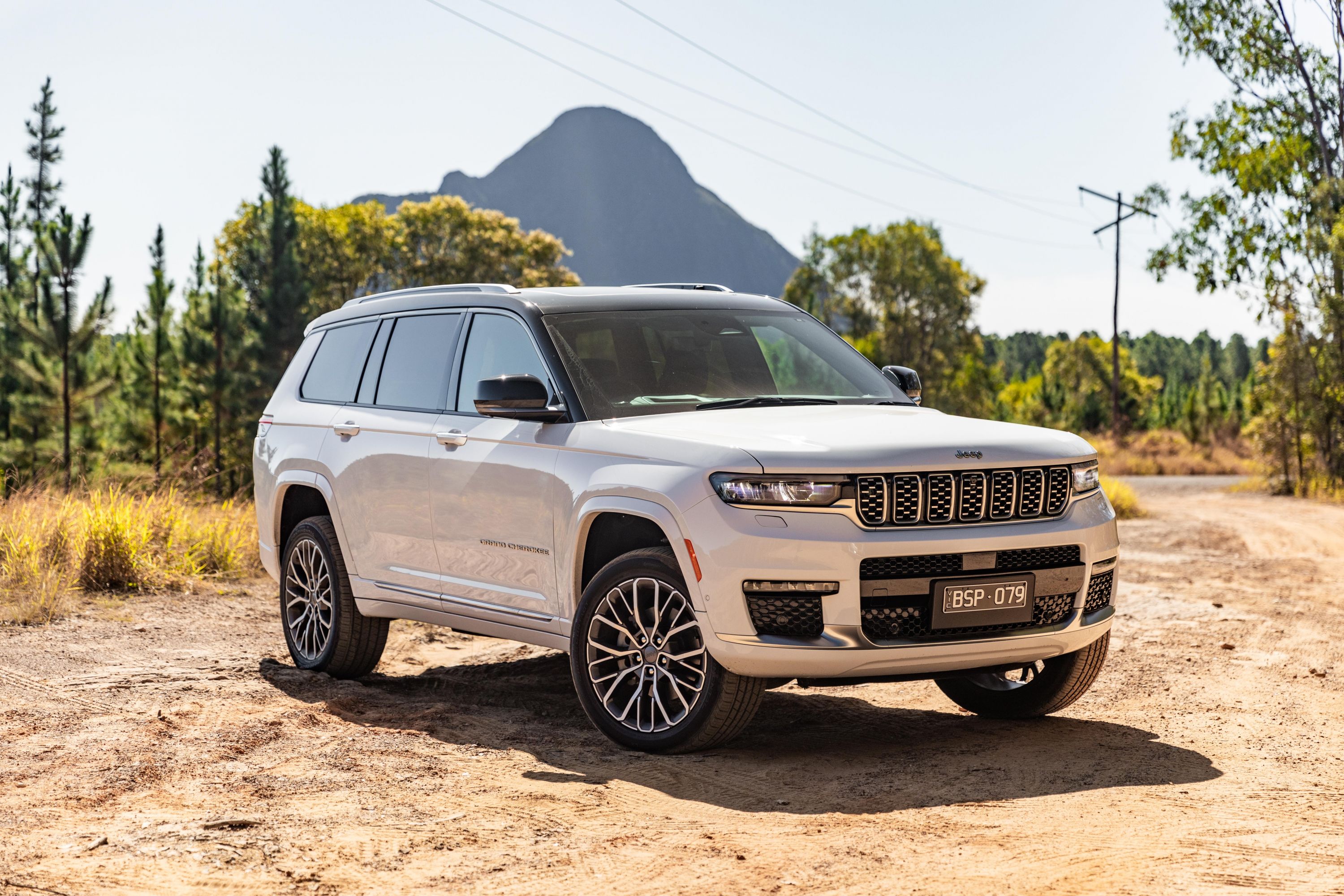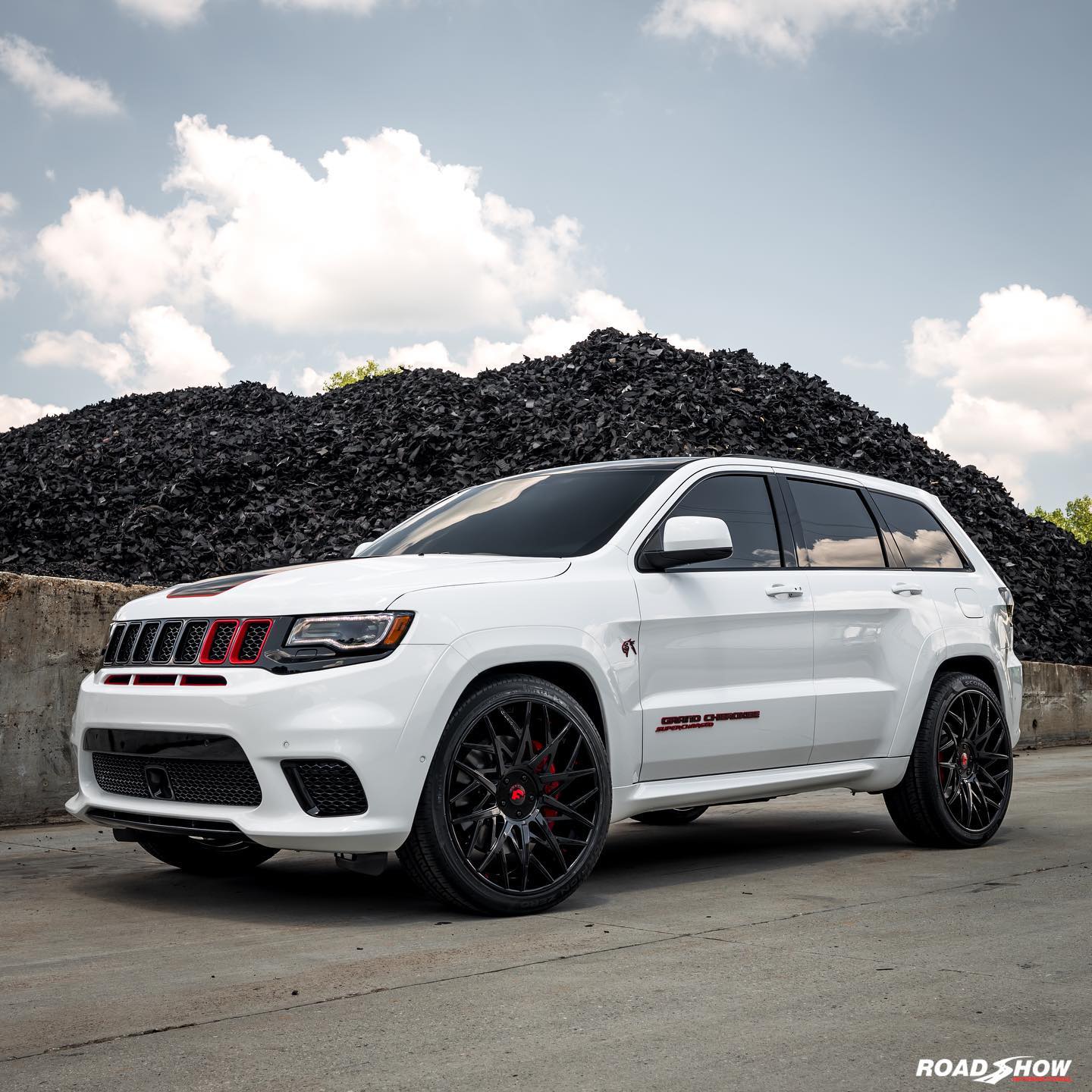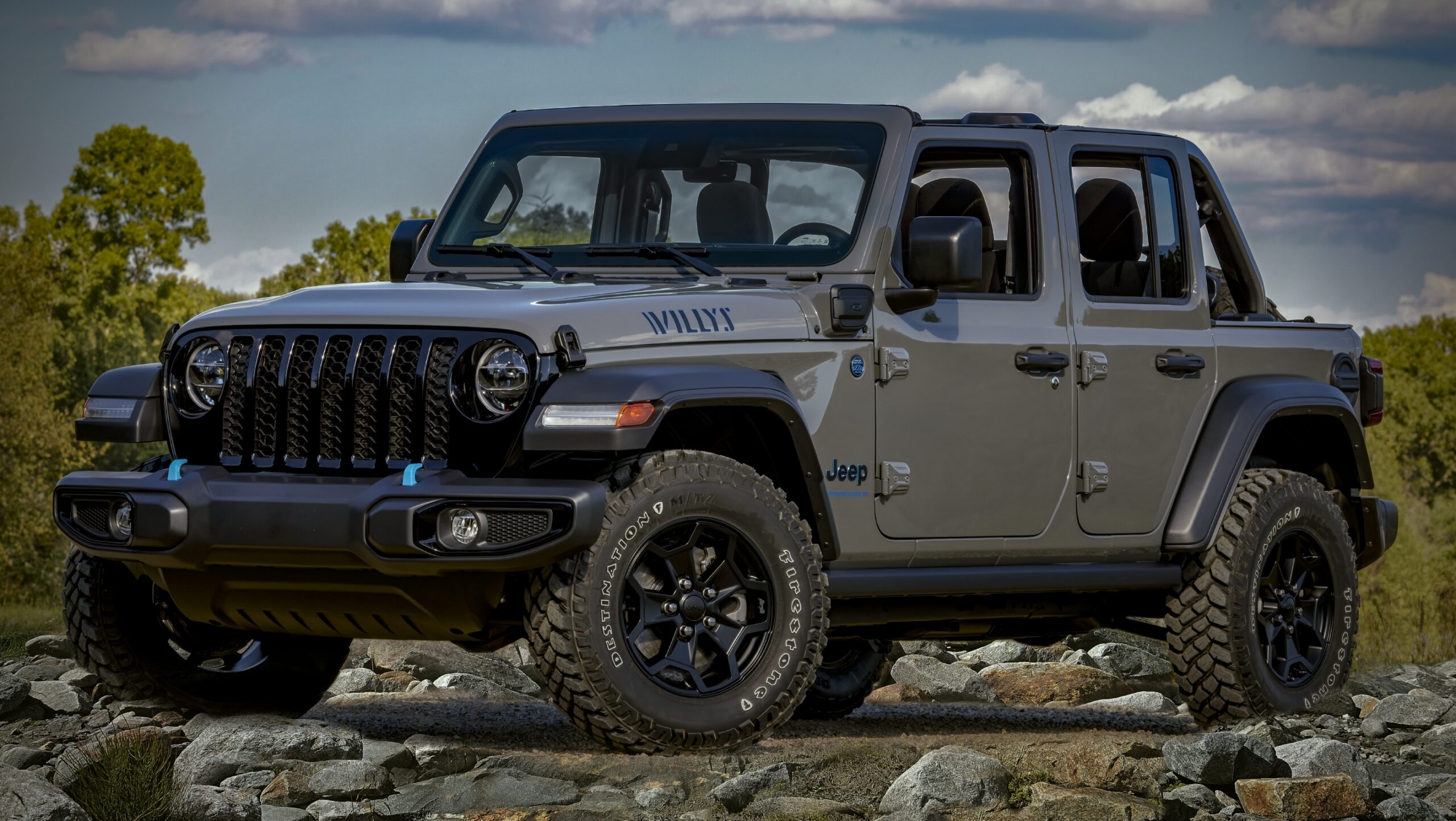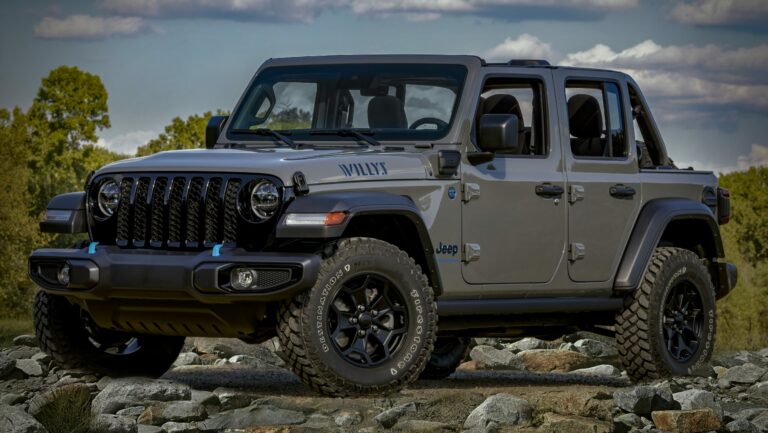Jeep Liberty Motors For Sale: A Comprehensive Guide to Revitalizing Your Ride
Jeep Liberty Motors For Sale: A Comprehensive Guide to Revitalizing Your Ride /jeeps.truckstrend.com
The Jeep Liberty, produced from 2002 to 2012, carved out a unique niche in the compact SUV market. Blending Jeep’s legendary off-road prowess with a more urban-friendly demeanor, it became a beloved vehicle for many. However, like all mechanical marvels, the heart of the Liberty – its engine – can eventually show signs of wear, leading owners to search for "Jeep Liberty Motors For Sale." This comprehensive guide will delve into everything you need to know about finding, purchasing, and installing a replacement engine for your cherished Jeep Liberty, transforming what might seem like an end-of-life scenario into a new beginning for your vehicle.
Whether you’re facing a catastrophic engine failure, looking to breathe new life into a high-mileage workhorse, or embarking on a custom project, understanding the landscape of available Liberty motors is crucial. This article will serve as your detailed roadmap, covering engine types, where to buy, key considerations, and practical advice to ensure a successful engine replacement.
Jeep Liberty Motors For Sale: A Comprehensive Guide to Revitalizing Your Ride
Understanding the Jeep Liberty Engine Lineup
The Jeep Liberty was primarily offered with two distinct engine options throughout its production run, each catering to different performance and efficiency needs:
-
2.4L PowerTech I4 Engine:
- Years: Primarily found in 2002-2005 models.
- Configuration: Inline 4-cylinder.
- Output: Approximately 150 horsepower and 165 lb-ft of torque.
- Pros: Generally more fuel-efficient than its V6 counterpart, simpler design, potentially lower maintenance costs for minor issues.
- Cons: Less power, particularly noticeable for highway merging, towing, or serious off-roading. It might feel underpowered for the Liberty’s weight.
- Ideal For: Owners prioritizing fuel economy, light-duty driving, or those who don’t require significant towing or off-road capability.


-
3.7L PowerTech V6 Engine:
- Years: Available from 2002-2012, becoming the standard engine in later models.
- Configuration: V6 (specifically, a 90-degree SOHC V6, part of Chrysler’s PowerTech engine family).
- Output: Varied slightly by year, but generally around 210 horsepower and 235 lb-ft of torque.
- Pros: Significantly more power and torque, better for towing (up to 5,000 lbs with proper equipment), improved acceleration, and more capable for off-road adventures.
- Cons: Lower fuel economy compared to the 2.4L I4, and some specific issues like premature valve seat wear (especially in earlier models) and potential for head gasket failures in high-mileage units.
- Ideal For: Owners needing more power, towing capacity, or those who frequently engage in off-road driving.

When searching for a replacement engine, accurately identifying which engine your Liberty has (and ideally, the specific year and any relevant engine codes) is the absolute first step. This information is typically found on your vehicle’s VIN sticker or owner’s manual.
Why Buy a Replacement Jeep Liberty Motor?
There are several compelling reasons why a vehicle owner might opt to purchase a standalone engine rather than a new vehicle:
- Catastrophic Engine Failure: This is the most common reason. A blown head gasket, spun bearing, cracked block, or severe internal damage can render an engine irreparable or make repairs prohibitively expensive.
- High Mileage and Wear: An engine with extremely high mileage may be running, but it could be burning oil, losing compression, or exhibiting various symptoms that indicate its lifespan is nearing its end. Replacing it preemptively can save future headaches.
- Cost-Effectiveness: For many, the cost of a replacement engine (and its installation) is significantly less than buying a new or even a comparable used vehicle, especially if the rest of the Liberty (transmission, body, interior) is in good condition.
- Project Vehicle/Engine Swap: Enthusiasts might buy a motor for a custom build, an engine swap into another vehicle, or to have as a spare.
- Restoration: For those restoring a classic or well-loved Liberty, a fresh engine is often a crucial component.
Where to Find Jeep Liberty Motors For Sale
The market for used, rebuilt, and remanufactured engines is vast. Here are the primary avenues to explore:
-
Salvage Yards / Auto Recyclers:
- Pros: Often the most affordable option. You can sometimes find low-mileage engines from wrecked vehicles. Local yards allow for in-person inspection.
- Cons: "As-is" sales are common, meaning limited or no warranty. The engine’s history might be unknown. You’ll likely need to remove ancillary components yourself.
- Tip: Look for yards that specialize in Jeeps or offer a limited warranty (e.g., 30-90 days). Ask for a video of the engine running before it was pulled, if available.
-
Specialized Engine Rebuilders / Remanufacturers:
- Pros: These companies meticulously disassemble, inspect, clean, and replace worn parts with new or refurbished components. They often come with substantial warranties (e.g., 1-3 years, unlimited mileage). The quality is generally superior to a simple "rebuilt" engine.
- Cons: Higher upfront cost compared to used engines.
- Tip: Research their reputation, warranty terms, and what precisely is replaced or refurbished in their process.
-
Online Marketplaces (eBay, Craigslist, Facebook Marketplace):
- Pros: Huge variety, potential for competitive pricing, and direct communication with sellers. You might find engines from private parties or smaller shops.
- Cons: High risk of scams or misrepresentation. Shipping can be expensive and complicated. Warranties are rare, and returns can be difficult.
- Tip: Exercise extreme caution. Prioritize local sellers for in-person inspection. Request detailed photos, videos of the engine running (if applicable), and clear communication. Use secure payment methods.
-
Dealerships / Mopar Parts Departments:
- Pros: You’re getting a brand-new (or factory-remanufactured) engine with a full manufacturer’s warranty. Guaranteed compatibility and quality.
- Cons: By far the most expensive option. For older models like the Liberty, brand-new crate engines might be scarce or only available as remanufactured units.
- Tip: Good for peace of mind if budget isn’t a primary concern.
-
Independent Mechanics / Repair Shops:
- Pros: Your trusted mechanic might have connections to reputable suppliers or even a used engine from a trade-in. They can often source and install the engine, providing a one-stop solution.
- Cons: Selection might be limited to what their network can provide.
Types of Jeep Liberty Motors Available
Understanding the terminology used by sellers is vital:
- Used Engine: Pulled directly from another vehicle. Its condition depends heavily on the donor vehicle’s history. It might be sold "as-is" or with a limited warranty. Often referred to as "low mileage" if from a vehicle with few miles.
- Rebuilt Engine: An engine that has been disassembled, inspected, and had specific worn components (like bearings, piston rings, gaskets) replaced. Quality can vary greatly depending on who did the rebuilding and what standards they followed.
- Remanufactured Engine: A more extensive process than rebuilding. The engine is completely disassembled, all components are cleaned, inspected, and machined back to factory specifications or replaced with new parts. Critical components (crankshaft, cylinder heads, block) are often machined. These engines typically meet or exceed OEM specifications and come with the best warranties.
- New Crate Engine: A brand-new engine, never installed in a vehicle, usually from the original manufacturer (Mopar) or a licensed aftermarket producer. For older models like the Liberty, these are rare and very expensive.
Key Considerations Before Purchasing
Before you commit to buying a Jeep Liberty motor, ask yourself (and the seller) these critical questions:
- Engine Compatibility: Double-check the year, engine size (2.4L or 3.7L), and any specific engine codes (e.g., "ED1" for the 2.4L, "EKG" for the 3.7L). Ensure it’s compatible with your vehicle’s transmission type (manual or automatic).
- Mileage and History (for Used Engines): What was the donor vehicle’s mileage? Was it in a wreck? Was the engine tested before removal? Ask for a VIN from the donor vehicle to potentially pull a CarFax report.
- Warranty: This is paramount. What’s covered? How long is the warranty? Is it parts only, or does it include labor? What are the return/replacement policies? Get it in writing.
- Included Components: Does the engine come as a "long block" (block, cylinder heads, valvetrain) or a "dressed long block" (includes intake manifold, exhaust manifolds, possibly accessories like alternator, power steering pump, AC compressor)? The more components included, the less you’ll need to swap from your old engine, but it also impacts price.
- Shipping and Logistics: How will the engine be shipped? What’s the cost? Is it crated securely to prevent damage? Who pays for return shipping if there’s an issue?
- Core Charge: Many sellers (especially rebuilders/remanufacturers) require a "core charge" which is refunded when you return your old engine. Factor this into your budget.
- Professional Inspection: If buying a used engine locally, consider having a mechanic inspect it before purchase. For online purchases, thoroughly inspect it upon arrival before installation. Look for cracks, damage, missing parts, or signs of oil leaks.
The Buying Process: A Step-by-Step Guide
- Accurate Diagnosis: Confirm your current engine issue. Is it truly irreparable, or can it be fixed for less? Get a professional opinion.
- Identify Engine Specifications: Determine the exact year, engine size, and any relevant codes needed for your Liberty.
- Research Suppliers: Begin searching online, calling local salvage yards, and checking with engine rebuilders. Get multiple quotes.
- Compare and Contrast: Lay out prices, warranties, what’s included, and shipping costs from various sellers. Don’t just pick the cheapest option; balance cost with reliability and warranty.
- Ask Detailed Questions: Use the "Key Considerations" section above as a checklist. Get everything in writing.
- Arrange Inspection (If Possible): For local used engines, inspect in person. For shipped engines, photograph the crate upon arrival and immediately inspect the engine before signing off on delivery.
- Finalize Purchase: Pay securely. Ensure all documentation (invoice, warranty details) is clear and complete.
- Plan for Installation: Decide if you’ll tackle the installation yourself (only recommended for experienced mechanics) or if you’ll hire a professional shop. Factor in labor costs, new fluids, filters, belts, hoses, and possibly a new clutch (for manual transmissions) or torque converter (for automatics).
Potential Challenges and Solutions
- Finding the Right Engine: The specific year and transmission compatibility can be tricky.
- Solution: Use online VIN decoders, consult forums, and double-check with multiple sources. Be patient; the right engine may take time to find.
- Shipping Damage: Engines are heavy and can be damaged in transit.
- Solution: Insist on insured shipping and thoroughly inspect the crate and engine immediately upon arrival. Document any damage with photos before accepting delivery.
- Engine Not Working Post-Installation: The new engine might have issues, or the installation itself could lead to problems.
- Solution: Adhere strictly to the seller’s warranty terms for testing (e.g., install within X days). Have a qualified mechanic perform the installation and initial diagnostics. Keep all receipts.
- Hidden Costs: Ancillary parts, fluids, and unexpected labor.
- Solution: Budget an extra 15-20% for unforeseen expenses. Ask your mechanic for a comprehensive quote that includes all necessary fluids, gaskets, and minor parts.
- "Lemon" Engine: Despite best efforts, you might get a faulty unit.
- Solution: A strong, clear warranty from a reputable seller is your best defense. Understand the return process and timeline.
Practical Advice and Actionable Insights
- Prioritize Warranty: Especially for used or rebuilt engines, a comprehensive warranty is your peace of mind. It’s worth paying a little more for.
- Do Your Homework: Research the seller’s reputation. Look for reviews, Better Business Bureau ratings, and online forum discussions.
- Don’t Go for the Absolute Cheapest: A rock-bottom price often signals potential issues or a lack of warranty. Balance cost with quality and support.
- Consider the Whole Vehicle: Before investing in an engine, assess the overall condition of your Liberty. Is the transmission good? Is the body rusted? Are there other major components nearing their end? An engine replacement is only worth it if the rest of the vehicle has life left.
- Budget for Installation: Unless you’re highly experienced, professional installation is crucial. Get quotes from several reputable shops.
- Replace Peripheral Items: While the engine is out, it’s the perfect time to replace easily accessible items like the water pump, thermostat, spark plugs, belts, hoses, and potentially the timing chain/belt if applicable. This prevents future headaches.
Table Price: Estimated Costs for Jeep Liberty Motors For Sale
Please note: These are estimated price ranges and can vary significantly based on location, seller, mileage (for used), included components, and market demand. Always get a specific quote.
| Engine Type | Condition | Estimated Price Range (USD) | Typical Warranty | Notes |
|---|---|---|---|---|
| 2.4L I4 | Used (High Miles) | $500 – $1,000 | 30-90 days (parts only) | Pulled from donor vehicle; condition varies; often "as-is." |
| (2002-2005) | Used (Low Miles) | $1,000 – $1,800 | 90 days – 6 months (parts only) | From newer wrecks; better chance of good condition. |
| Rebuilt | $1,500 – $2,500 | 1 year / unlimited mileage (parts only) | Quality can vary; inquire about what’s replaced. | |
| Remanufactured | $2,000 – $3,500+ | 1-3 years / unlimited mileage (parts & labor option) | High quality, often better than new with updated components. | |
| 3.7L V6 | Used (High Miles) | $700 – $1,200 | 30-90 days (parts only) | Common engine, so more availability; check for known issues (valve seats, head gaskets). |
| (2002-2012) | Used (Low Miles) | $1,200 – $2,500 | 90 days – 6 months (parts only) | Good option if thoroughly inspected and tested. |
| Rebuilt | $2,000 – $3,500 | 1 year / unlimited mileage (parts only) | Ensure reputable rebuilder addresses common 3.7L issues. | |
| Remanufactured | $2,800 – $4,500+ | 1-3 years / unlimited mileage (parts & labor option) | Best choice for longevity and peace of mind, especially with a good warranty that covers labor. |
Note: These prices typically do not include shipping, core charges, or installation labor. Installation costs can range from $1,000 to $2,500+ depending on the shop and complexity.
Frequently Asked Questions (FAQ) about Jeep Liberty Motors For Sale
Q1: Can I swap a 3.7L V6 engine into a Liberty that originally had a 2.4L I4?
A1: While technically possible, it’s a highly complex and expensive undertaking. It would require not only the engine but also the compatible transmission, engine computer (ECU), wiring harness, possibly radiator, exhaust system modifications, and extensive reprogramming. It’s generally not cost-effective for most owners. It’s much simpler to replace with the exact same engine type.
Q2: What’s the main difference between a "rebuilt" and a "remanufactured" engine?
A2: A "rebuilt" engine usually means worn components were replaced as needed to get it running again. Quality varies. A "remanufactured" engine undergoes a much more rigorous process: complete disassembly, cleaning, machining of critical components (block, heads, crankshaft) to factory specs, replacement of all wear parts with new or refurbished ones, and often includes updated components to fix original design flaws. Remanufactured engines typically offer better quality and warranties.
Q3: How do I know which engine my Jeep Liberty has?
A3: The easiest way is to check your owner’s manual or the vehicle’s VIN (Vehicle Identification Number). You can use online VIN decoders, or simply look under the hood – the 4-cylinder is distinctly smaller and narrower than the V6.
Q4: What should I look for when inspecting a used Jeep Liberty engine before buying?
A4: Look for obvious signs of external damage (cracks, dents), excessive oil leaks, missing components, or signs of water in the oil (milky residue). Check the spark plug wells for oil or coolant. If possible, ask for a compression test or a video of the engine running before removal.
Q5: How long does it typically take to replace a Jeep Liberty engine?
A5: For a professional mechanic, an engine replacement can take anywhere from 15 to 30 labor hours, depending on the engine type, year, and complexity. This usually translates to 2-5 days in the shop once the engine arrives.
Q6: Is it worth replacing the engine in an older Jeep Liberty?
A6: This depends on the overall condition and value of your vehicle. If the body is rust-free, the transmission is solid, and the interior is in good shape, an engine replacement can be a cost-effective way to extend the life of your Liberty for many more years, especially compared to the cost of a new vehicle. If the rest of the vehicle is falling apart, it might not be worth the investment.
Conclusion
Finding the right "Jeep Liberty Motors For Sale" is more than just a transaction; it’s an investment in the continued life of a capable and beloved vehicle. By understanding the different engine types, knowing where to source them, carefully considering the available options, and preparing for the installation process, you can navigate this significant repair with confidence. A well-chosen replacement engine can breathe new life into your Jeep Liberty, ensuring it continues to serve you faithfully on and off the road for years to come. With careful research and a strategic approach, your Jeep Liberty can once again stand proud, ready for its next adventure.




